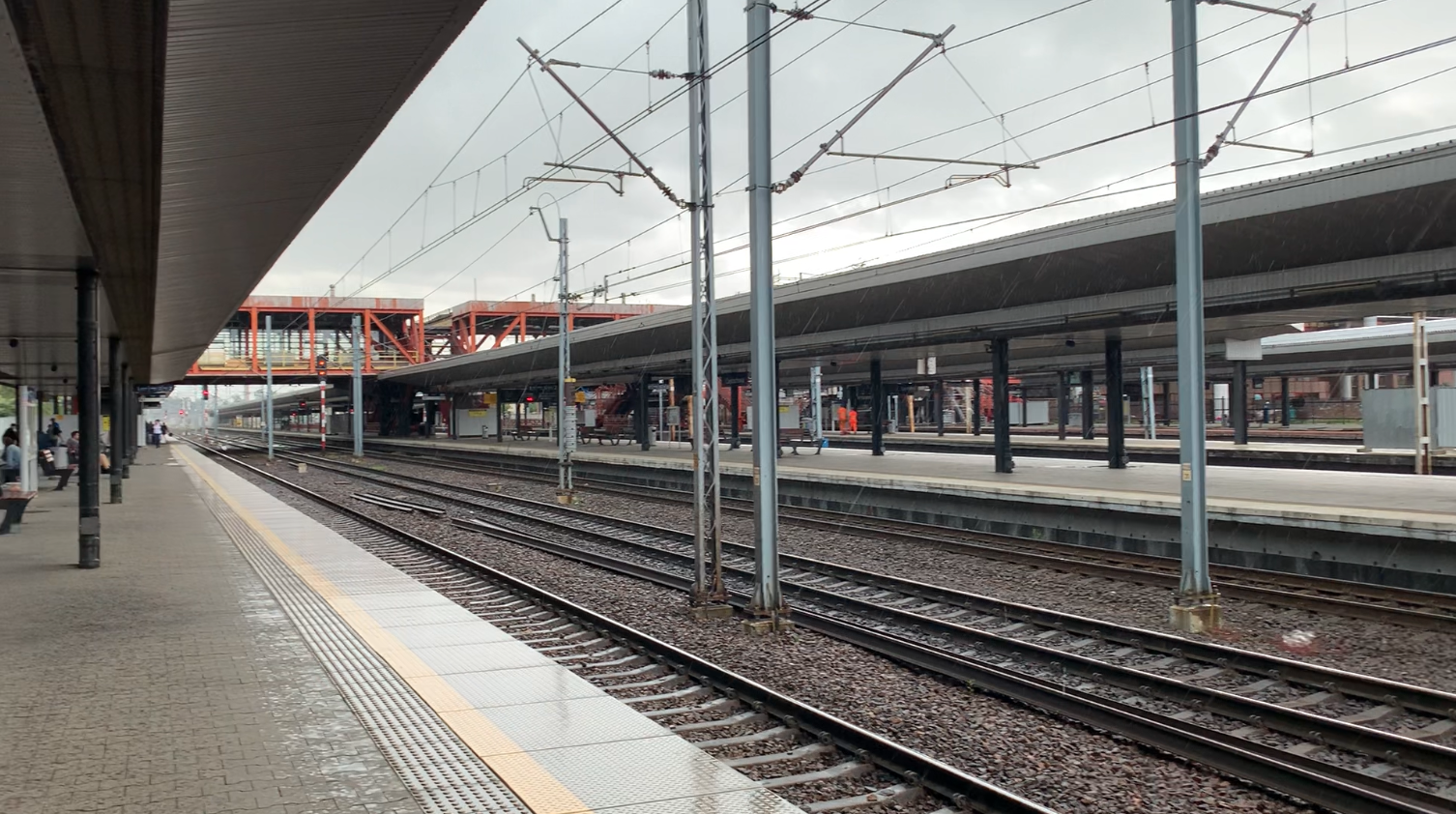Częstochowa 2025-08-02
Częstochowa Railway Station.
Geographic coordinates: 50.808N 19.121E. Elevation 249 m. Address: Aleja Wolności 21/23, 42‑200 Częstochowa.
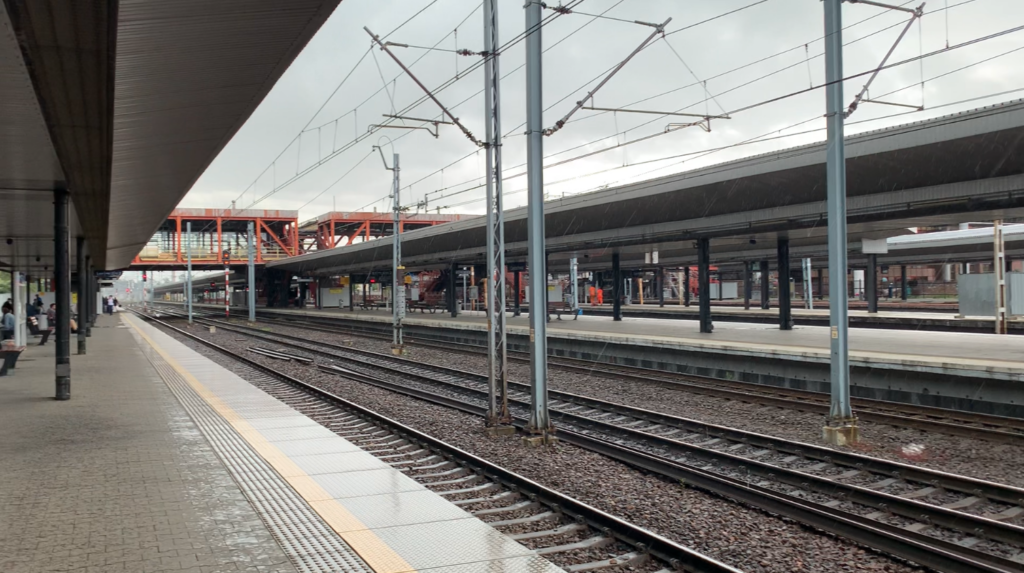
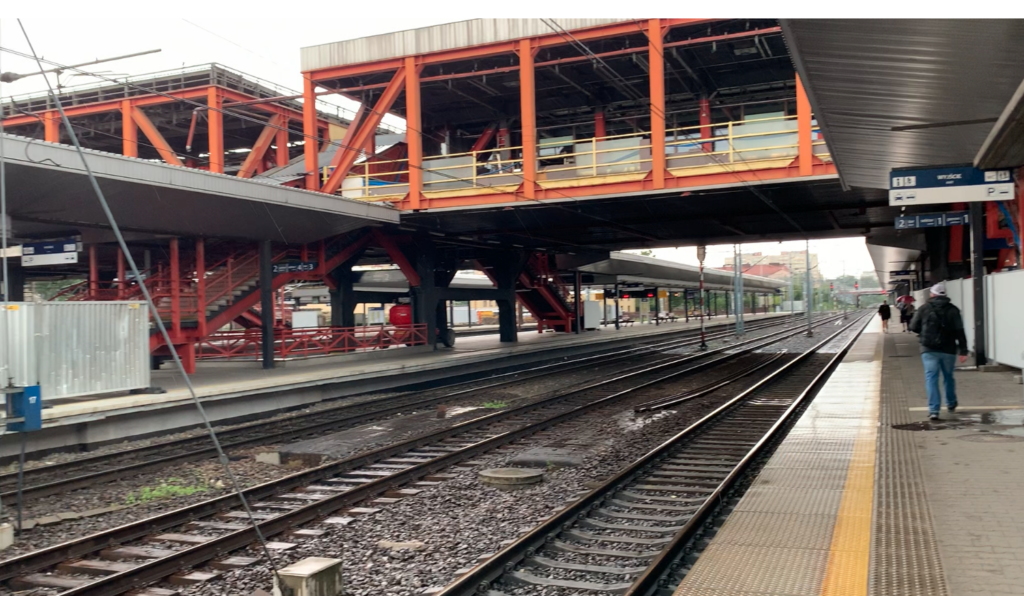
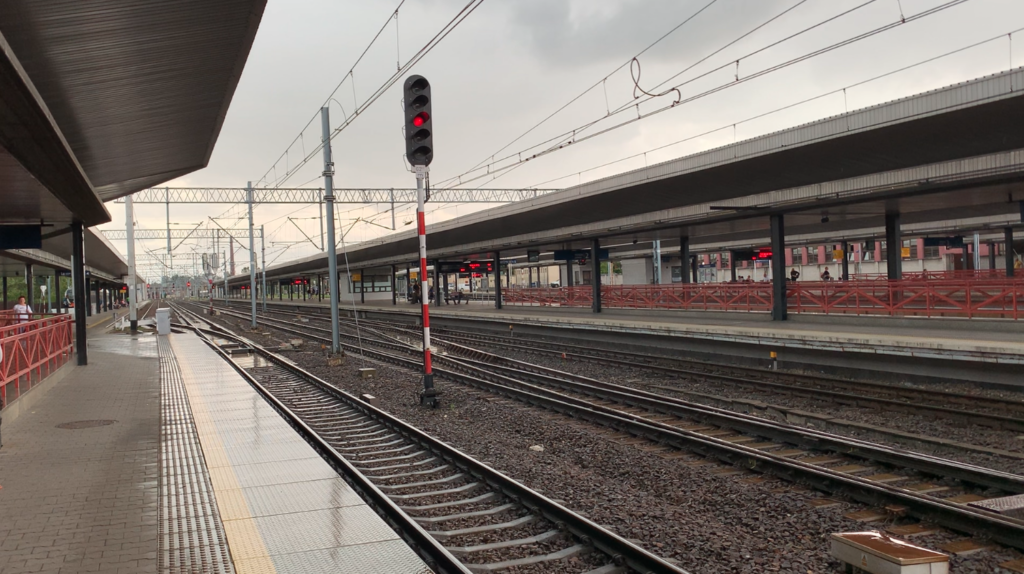
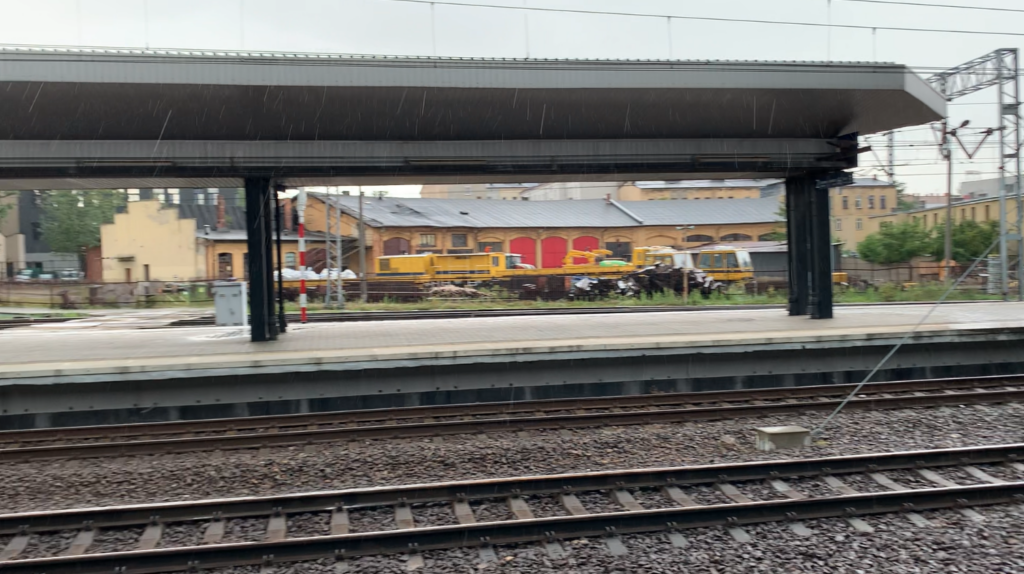
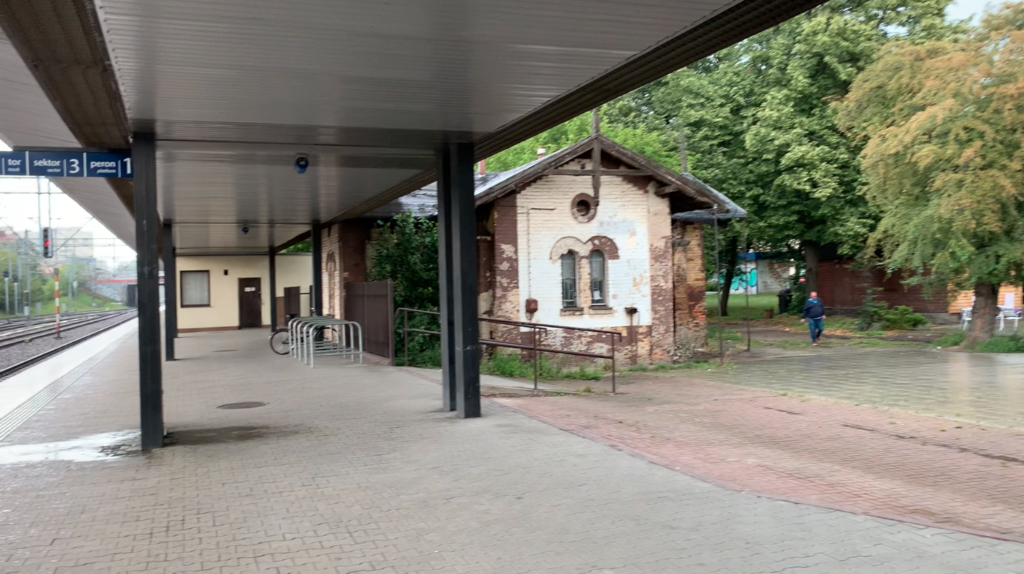
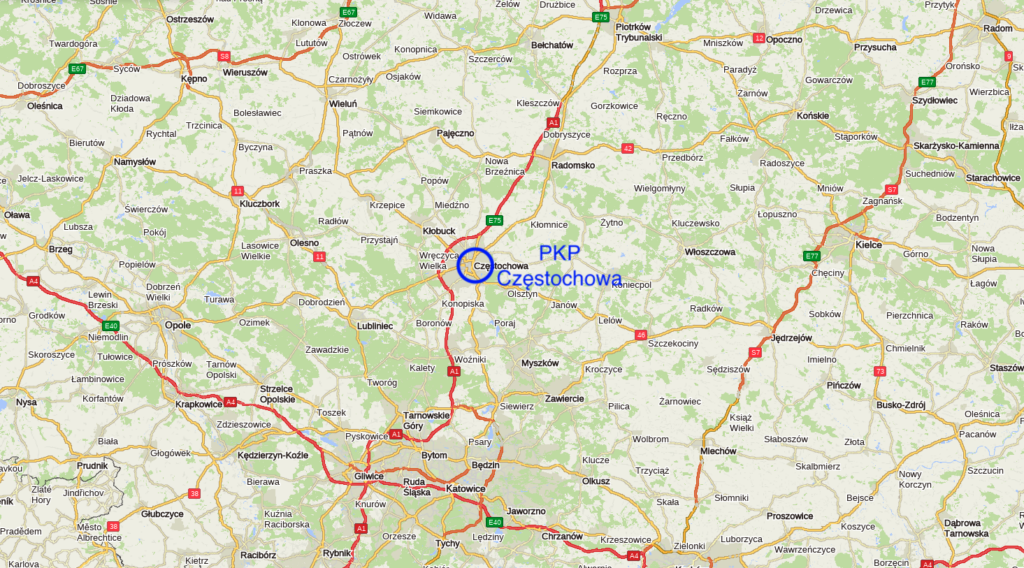
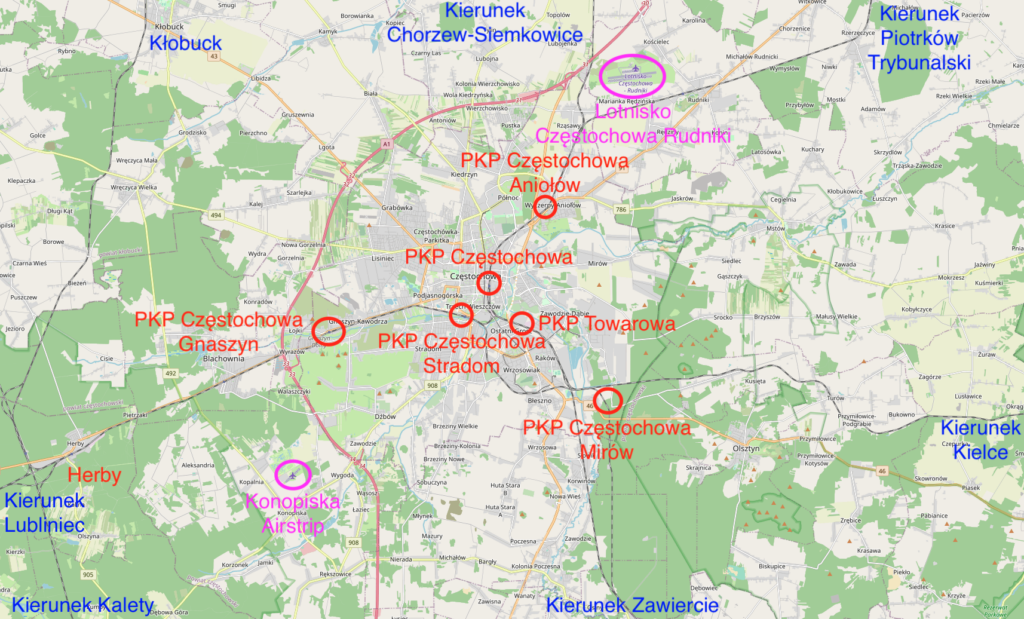
City of Częstochowa.
Częstochowa is a large city in Poland, located in the Silesian Voivodeship. Its current area is 159.71 square kilometers (59.71 square miles). The population is 217,530 (2020). Although located within the Silesian Voivodeship, Częstochowa historically and culturally belongs to the Lesser Poland Voivodeship. The city is located in the northern part of the Silesian Voivodeship, on the Warta River. Częstochowa is a major industrial, academic, and religious center. The city is home to the Jasna Góra Basilica and the Pauline Monastery. The chapel houses a miraculous image of the Blessed Virgin Mary, which is held in special veneration. The city was founded between 1370 and 1377.
PKP Częstochowa.
Częstochowa has several railway stations, the most important of which is Częstochowa Station, located in the Śródmieście district, on the historic Warsaw-Vienna route. The first railway station was built with the construction of the Warsaw-Vienna railway line in 1846. Historically, the station was called Częstochowa Osobowa (Częstochowa Passenger Station). The first electric train entered the station in 1956. The station houses a technical monument: a TKt48-151 steam locomotive. In 2018, the station served 3,100,000 passengers. In 2021, the station served approximately 6,900 passengers daily, or 2,518,500 people annually.
The station has four platforms. Platform 1 – Platform numbering is from the eastern side of Marszałek Józefa Piłsudskiego Street, not from the western side of the station. All platforms are covered. Platform 1 consists of Platform 1 and Platform 1A. Platform 1A is the terminus, and trains heading towards Upper Silesia begin and end here. Platform 1A is 280 meters long, Platform 1 is 385 meters long, and Platform 2 is 565 meters long. This platform is called the pilgrimage platform because it was intended for special trains carrying pilgrims to stop here. Platform 3 is 470 meters long and runs in an S-shape. Platform 4 is located at the station and has a single edge, although it was previously double-edged. The platform is 275 meters long.
At Częstochowa station, there is a tunnel under the tracks and platforms, as well as a covered footbridge over the tracks, built like a shopping arcade. There is also a footbridge over the tracks near the station, connecting 1 Maja Street with Ogrodowa Street. There used to be a level crossing here, but it had to be removed because the barriers were almost constantly closed. The crossing was replaced by a pedestrian bridge called “Galeria Street,” which displayed paintings depicting the communist era.
Near Częstochowa station, on the north side, is a fan-shaped locomotive shed. It has had 11 stations throughout its history. It is currently still used by the Polish State Railways (PKP), and the turntable is operational.
Near Częstochowa station, on the south side, is also a rectangular locomotive shed with seven passable tracks. The shed is still in use as intended.
Częstochowa Railway Station.
The first station in Częstochowa was built between 1845 and 1846, during the construction of the Warsaw-Vienna Railway. It had a Classicist style. The building was two-story, with a basement, and a wooden roof, slightly sloped, covered with sheet metal. The building housed a ticket and luggage office, a waiting room, and a restaurant. Apartments were on the first floor. In 1852, a telegraph was installed at the station. In 1873, the station was enlarged and then expanded by architect Czesław Domaniewski. Around 1905, the station was expanded again.
The decision to build a new station was made in the mid-1970s, when the city became the capital of the voivodeship. A competition was announced, and the design by architect Ryszard Frankowicz won. The old station was demolished for the new station. As it turned out, demolition of the old station was unnecessary. The Polish State Railways (PKP) needed significantly less. Construction began on the new station in 1989. On November 9, 1996, the station officially opened, commemorating the 150th anniversary of the railway reaching Częstochowa. However, earlier, in 1994, a passageway with waiting rooms above the platforms and tracks had already been opened.
The station has an area of 3,186 square meters and a volume of 41,000 cubic meters. The roof structure rests on 22 pillars, each 11.50 meters high from ground level and 1 meter in diameter. A skylight breaks up the simple structure of the roof.
The station houses ticket offices, waiting rooms, and restrooms. A chapel is located in the passageway above the platforms, where masses are celebrated. The station is open 24 hours a day. The station building houses three PKP InterCity ticket offices and three Koleje Śląskie ticket offices. There are also Koleje Śląskie and PolRegio ticket machines. Luggage lockers are located in the ticket hall. Luggage storage and a photocopying desk are also available. Some service outlets are open, while others are waiting for tenants. Toilets, charged at PLN 4.00, are located on level 0, opposite the station entrance. Free Wi-Fi is available in selected locations (network name: _PKP_WIFI). The station also houses the local Railway Security Guard Headquarters.
Next to the train station is a bus station and the Polish Post Office. The station is well connected to the city. Trams, buses, and taxis are available. There are two taxi ranks. Paid parking is available at the station. Address: 42-200 Częstochowa, Aleja Wolności 21. Access to the Jasna Góra Monastery is via Aleja Wolności and then Aleje NMP. The distance is approximately 1,800 m.
In 2015-2016, the waiting area in the passage above the tracks was modernized. Guided paths were installed and fire safety systems were installed. Also in 2016, platforms 1, 1a, and 2 were modernized. A new audio system and a monitored passenger information system were installed. The project cost PLN 5 million.
New Częstochowa Station.
A decision was made to completely reconstruct Częstochowa Station. The scope of the current investment (2025) includes the complete demolition of the old Częstochowa Osobowa station, designed by architect Ryszard Frankowicz. A new facility will be constructed, functioning as a transfer center for trains and buses. Work began in April 2025, with Texom from Krakow as the contractor. By July 2025, the eastern pavilion, facing Marszałka Józefa Piłsudskiego Street, had been demolished. The main western pavilion, facing Rady Europy Square, will be demolished in 2026-2027. This will occur after the reconstruction of the connecting passage above the platforms and tracks. The new station will have a smaller usable area of 5,321 m². The previous facility had a total area of 9,000 m². The new facility will feature logical passageways, service premises, and be accessible to wheelchair users and the blind. Both will utilize renewable energy sources. There will be a modern passenger information system. The investment cost is expected to reach PLN 119 million.
The following railway lines run through the Częstochowa railway station:
Railway Line No. 1 Warszawa Zachodnia – Katowice. Until the Great War, it belonged to the Warsaw-Vienna Railway. It was launched between 1845 and 1847. The line currently has a length of 316.066 km. It is double-track and electrified.
Railway Line No. 700 Częstochowa – Częstochowa Stradom. This single-track line is electrified. It is actually a connecting line between two major railway stations in Częstochowa. The line was renovated in 2015. The line is 2.542 km long. Train speeds are up to 50 km/h.
Railway Line No. 701 Częstochowa – Kucelinka. This single-track line was built in the 1950s and connects Częstochowa with the Kucelinka branch station. On December 29, 1973, the line was electrified.
Track system in Częstochowa.
In the 19th century, the track system in Częstochowa was limited solely to the Warsaw-Vienna route and a few railway sidings. However, it was expanded over the following years.
In the final years of its operation, the Warsaw-Vienna Railway Company (Droga Żelazna Warszawsko-Wiedeńska) began a major investment in the construction of the Herby-Kielce line, spanning 134 km. This was the last major construction project in the Russian Partition before the Great War. The line was driven by German industrialists who held shares in the Warsaw-Vienna line. They also held shares in the Right Bank of the Oder Railway (ROUE). The border between the Prussian and Russian Partitions ran through the villages of Herby, specifically Herby Pruskie and Herby Ruskie. In 1892, the Lubliniec-Herby Pruskie line was built on the Prussian side, with a gauge of 1,066 mm. The rails were soon converted to standard gauge of 1,435 mm. In the Russian Partition, the Stradom-Herby Ruskie line, with a gauge of 600 mm, was opened in 1903. Moscow required a gauge of 1,524 mm, and the Kielce-Częstochowa-Herby Ruskie line was constructed using this gauge. The line branched off from the Iwangorodzko (Dęblin)-Dąbrowska Railway. This is how the Herby Ruskie Railway was established in 1911.
The construction of the Herby Ruskie Railway required the purchase of the narrow-gauge Stradom-Herby Ruskie line. A standard-gauge connecting line was built between Herby Pruskie and Herby Pruskie. The Herby Ruskie Railway route through Częstochowa followed a different route than it does today. From the Częstochowa Stradom station, it ran east along Rzeźnicka, Niska, and Prosta streets, and curved left to the freight station. The bridge over the Stradomka River has survived. The passenger station was located between Bór and Równoległa streets, where a green belt now stands. The track then ran through the area of the current VENDO PARK shopping center. Then, via Niepodległości Avenue, National Road No. 1, to the freight station. Green areas remain to this day, where the tracks once stood. The Lubliniec-Kielc route then passed through the towns of Zawodzie-Dąbie and Mirów to the Kusięta Nowe station. The Herbska Railway bridge over the Warta River has been preserved.
In 1905, the Warsaw-Vienna route was connected with the Stradom-Herby route. The first connection was a connecting line along what is now Tadeusz Boya-Żeleńskiego Street and partly along Bohaterów Monte Casino Avenue. The connecting line connected Częstochowa station with Stradom station. Here, where the unusual intersection (Janusz Korczaka, Juliusz Słowacki, Bohaterów Monte Casino) now stands, was a passenger railway station. It was commonly known as Częstochowa Pierwszy. The connecting line had a standard gauge.
As soon as the Great War broke out, Germans rebuilt the tracks on the Lubliniec-Kielce route to a 1,435 mm gauge.
After World War II, the Herby Railway track system in Częstochowa was relocated. After World War II, the Herby Railway route was relocated from Częstochowa Stradom station to Kusieta Nowe station. Now, from Częstochowa Stradom station, the line turns right, heading south. The line runs under National Road No. 43. Then, it curves to the left, heading east. The line passes under Bohaterów Katynia Street and then under National Road No. 1 (Aleja Wojska Polskiego). It then intersects and connects with Railway Line No. 1, passes the Warta Canal and the Warta River, and crosses the Żelazny Bridge. There are five of these truss bridges, as there are five tracks. Each track has its own bridge. Next comes the Kucelinka railway station, where the tracks intersect at a junction. Here, a track branches off to the Częstochowa Mirów freight station. The line continues eastward.
PKP Częstochowa passenger traffic:
Częstochowa is well connected to the rest of the country. Data from January 2023. There are 86 trains per day. From Częstochowa, you can reach: Białystok – InterCity “Nałkowska”, InterCity “Pilecki”. Bielsko-Biała – InterCity “Daszyński”, “Hutnik”, “Kormoran”, “Pilecki”. Busko-Zdrój – 1 PolRegio train. Gdynia – 1 InterCity “Hutnik”, 3 TLK “Karpaty”, “Doker”, “Flisak” trains. Gliwice – 19 Koleje Śląskie trains. Katowice – 3 TLK “Chemik”, “Doker”, “Flisak” trains. Kielce – 4 PolRegio trains. Kraków – InterCity “Reymont”. Krynica-Zdrój – TLK “Karpaty”. Lubliniec – 8 Koleje Śląskie trains and 1 PolRegio train. Łazy – 1 Koleje Śląskie train. Łódź Fabryczna – 4 PolRegio trains and 1 InterCity “Reymont” train. Namysłów – 1 PolRegio train. Olsztyn – 2 InterCity trains “Skarbek”, “Kormoran”. Piotrków Trybunalski – 1 PolRegio train. Płock – TLK “Chemik”. Racibórz – TLK “Skarbek”. Radomsko – 6 PolRegio trains. Szklarska Poręba Górna – 2 TLK “Karkonosze”, “Orzeszkowa” trains. Tychy – 5 Koleje Śląskie trains. Warsaw Gdańska – InterCity “Oleńka”, TLK “Orzeszkowa”. Warsaw Wschodnia – 2 InterCity trains “Fredro”, “Daszyński” and TLK “Karkonosze”. Włoszczowa – 2 PolRegio trains. Wrocław Główny – 3 InterCity trains “Fredro”, Nałkowska”, “Oleńka”. Zakopane – TLK “Karpaty”.
Written by Karol Placha Hetman
